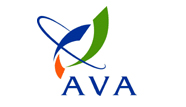
Regulatory Programmes Department
- Consultation Period:
- 09 Mar 2016 - 09 May 2016
- Status:
- Closed - Summary of Responses
Response To Comments Received From The Public Consultation On Proposed Amendments To The Food Regulations Regarding The Maximum Limit For Lead In Infant and Follow-on Formula
The Agri-Food and Veterinary Authority of Singapore (AVA) initiated a public consultation exercise for the period 9 March 2016 to 9 May 2016 on proposed amendments to the Food Regulations regarding the maximum limit for lead in infant formula (includes follow-on formula). Feedback was sought from the food industry (local manufacturers and importers of infant formula and follow-on formula) on the following:
- Ability to comply with the revised maximum limit of 0.01 ppm for lead (limit applies to products as consumed)
- In the event that the company’s infant formula and follow-on formula does not comply with the revised maximum limit, the estimated length of time required for importers to source for alternative supplies of infant and follow-on formula, and for local manufacturers to reformulate their products to comply with the revised maximum limit.
Eight companies responded to the public consultation exercise: six of which were local importers and manufacturers of the infant and follow-on formula, one was an exporter of infant formula and follow-on formula to Singapore and the last was a major retailer. All eight companies were supportive of the proposed amendment and informed AVA that the lead content in their company’s products intended for sale in Singapore are able to comply with the proposed revised maximum limit.
AVA appreciates the time taken by individuals and organisations to submit feedback and comments which have contributed to the decision making process, and would like to encourage all food industry members to actively participate in future calls for comments.
Detailed Description
Aim
The Agri-Food and Veterinary Authority (AVA) is seeking feedback from importers and local manufacturers of infant formula (includes follow-on formula) on the proposed amendment to the Food Regulations concerning the maximum limit for lead in infant formula (includes follow-on formula).
Background
Maximum limits for incidental constituents, commonly termed “contaminants” are specified under the Food Regulations. Lead is a naturally-occurring element that is present in many foods due to absorption from soil, air and water. In order to safeguard consumer health, maximum limits for lead in food are specified under the Food Regulations.
Ingredients used in the production of infant formula may contain trace amounts of lead from the environment. Infants are a vulnerable group of consumers, and are particularly susceptible to the toxic effects of lead, which can be severe and permanent. Lead affects the brain and nervous system development in infants, which can diminish their ability to learn. Additionally, the dependence of infants on infant formula as the sole source of nutrition increases their vulnerability.
In 2014, the Codex Alimentarius Commission (CAC)1 revised the maximum limit for lead in infant formula from 0.2 ppm to 0.01 ppm (as consumed)2. This decision by the CAC was made in response to the 2011 safety assessment of lead conducted by the Joint FAO/WHO Expert Committee on Food Additives (JECFA). As a result of the assessment, JECFA withdrew the Provision Tolerable Weekly Intake (PTWI)3 for lead as the threshold for safe exposure could not be established.
In view of this and considering exposure data from the GEMS/Foods4, the CAC adopted a limit of 0.01 ppm for lead in infant formula, deeming this level to be as low as reasonably achievable (ALARA), to ensure food safety without adversely affecting international trade. Consequently, the maximum limit for lead in infant formula as specified in CODEX Standard 193-1995 (General Standard for Contaminants and Toxins in Food and Feed) was revised to 0.01 ppm (as consumed).
Proposed Amendments
The current limit for lead in “infant formula and baby food” is 0.2 ppm as specified under the Tenth Schedule of the Food Regulations. Follow-on formula is also included in this category. AVA proposes to revise the limit for lead in infant formula to 0.01 ppm (as consumed). The revised limit will also apply to follow-on formula. This is consistent with the maximum limit of 0.01 ppm reflected in CODEX Standard 193-1995. The limit for lead in baby food will remain unchanged at 0.2 ppm.
Once the amendments are gazetted into the law, infant formula and follow-on formula containing lead at levels exceeding the new limit will not be allowed for sale in Singapore.
Request for comments
AVA invites views and comments on:
a. Whether the infant formula and follow-on formula imported/manufactured by your company is able to comply with the revised maximum limit of 0.01 ppm for lead (limit applies to products as consumed).
b. In the event that the infant formula and follow-on formula imported/manufactured by your company does not comply with the revised maximum limit,
i. For importers: the estimated length of time that your company will need to source for alternative supplies of infant and follow-on formula.
ii. For local manufacturers: the estimated length of time that your company will need to reformulate your products to achieve a level of lead that complies with the revised maximum limit.
Procedure and timeframe for submitting views and comments
AVA welcomes views and comments on the above proposal. All submissions should be clearly and concisely written, and should provide a reasoned explanation for any proposed revisions.
Mail:
Regulatory Programmes Department
Agri-Food & Veterinary Authority of Singapore
52 Jurong Gateway Road #13-01 Singapore 608550(Attention: Ms Leong Ai Ling)
Email:
1 The Codex Alimentarius Commission is the international food standards setting body formed by the Food and Agriculture Organisation (FAO) and the World Health Organisation (WHO).
2 “As consumed” refers to the reconstituted form when these products are prepared in accordance with the instructions on the product label.
3 An endpoint used for food contaminants such as heavy metals with cumulative properties. Its value represents permissible human weekly exposure to those contaminants unavoidably associated with the consumption of otherwise wholesome and nutritious foods.
4 Global Environment Monitoring System - Food Contamination Monitoring and Assessment Programme (GEMS/Food)

